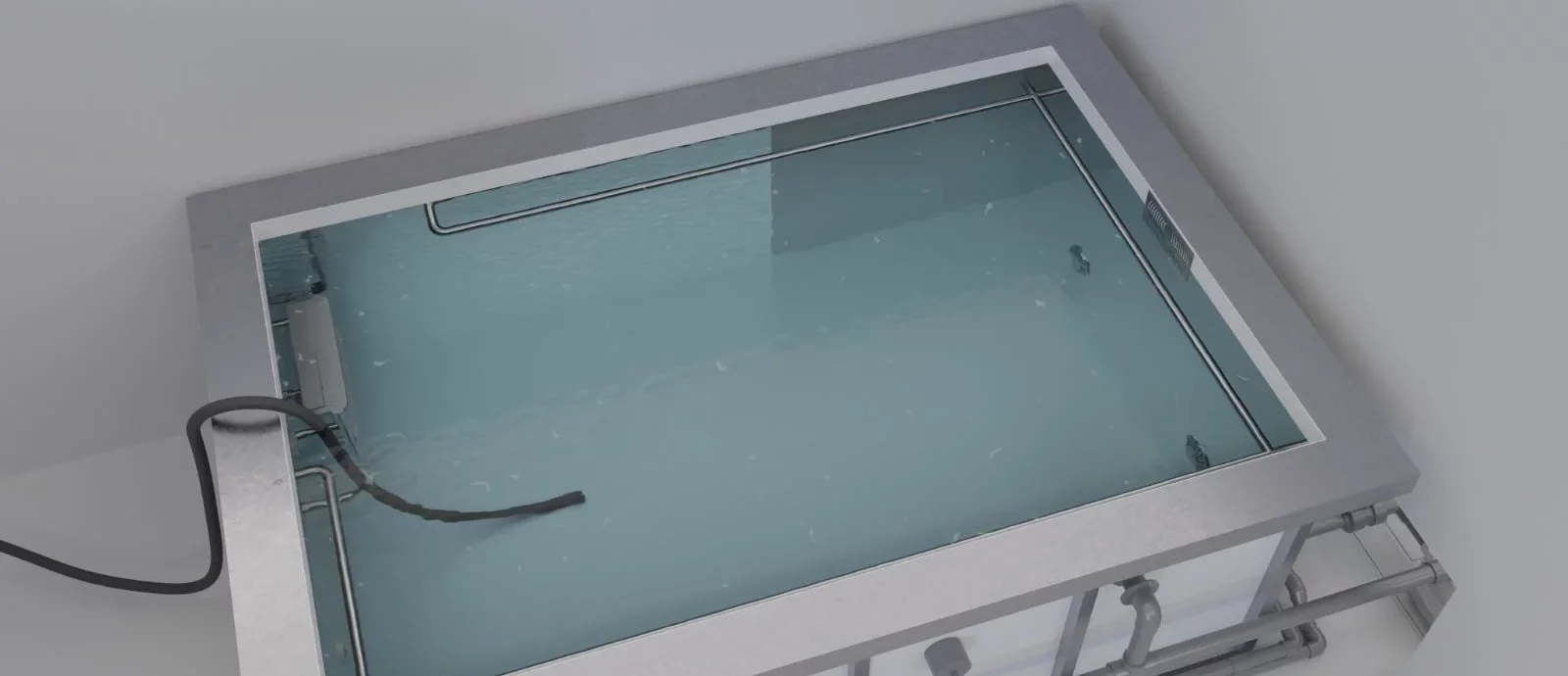Should my hydrotherapy pool be above or below ground?
Posted on 10 August 2017 By Aaron Stretton

In This Article
One of the first things we think about when specifying a hydrotherapy pool is whether or not it will be…
One of the first things we think about when specifying a hydrotherapy pool is whether or not it will be above or in the ground. Typically, we come to this decision with the client based on the needs of the end user.
Recently, we’ve found that a half and half configuration is pretty handy, but of course, it all depends on what you’re looking for. There are benefits to any pool setting, but which suits your needs best?
Below ground hydrotherapy pools
Hydrotherapy pools that are inset to the ground are usually a popular option for new buildings. As you can imagine, below ground hydrotherapy pools look the most like a common everyday swimming pool, making it a bit more subtle in certain environments.
Because we create bespoke stainless steel pools that are installed in one-piece, our below ground models are particularly easy to install. The space for the pool will be excavated first, and then the pool is craned into the hole and covered until the rest of the building is practically complete.
People are usually more drawn to the idea of a below ground pool because it looks better, which means that this configuration is usually used more in private homes where the pool can also be used solely for swimming.
Above ground hydrotherapy pools
Above ground pools are more common in multi-user settings. They can be found in places like rehabilitation centres and SEN schools, and are usually used solely for hydrotherapy purposes.
As you can imagine, an above ground pool is a bit less subtle than an inset one.
Installing a hydrotherapy pool above ground is actually the cheapest option in terms of installation costs. This is because you don’t need to do any excavation, which of course saves money.
Above ground hydrotherapy pools are also the normal go-to option if they’re being installed in a pre-existing building. Again, this is because you don’t need to dig anything if you’re installing above ground.
Above ground structures are usually a good option for SEN schools. Having spoken to quite a few SEN school teachers and assistants over the years, some students can get a bit over-excited by the idea of a pool and will simply run straight into it fully-clothed.
Having an above ground pool immediately puts a barrier in the way and stops the pupils from getting into the hydrotherapy pool so quickly and easily.
How about half-in half-out?
Recently, we’ve seen more and more hydrotherapy specialists who prefer for a pool to be installed half-in half-out the ground. Whilst much of the depth of the pool will be inset into the ground, there will be about half of it above the surface.
This is a great idea for a multitude of reasons.
The half and half configuration is cheaper in terms of installation costs because you don’t need to dig as deep as you would if the pool were below ground. It’s also a lot easier in case you need to evacuate the pool.
The user can simply be pulled to the side of the pool, and then slid straight on to trolleys or stretchers for a quicker, less stressful experience.
Having the pool at a mid-level is also better for users who are hoisted into the water. Particularly with younger individuals who are scared of water, it can be quite a daunting feeling to be lowered so far down into an inset pool.
By having the pool half above ground, it helps the individual relax. The carer can also sit on the edge of the pool to help keep them calm and comfortable during the transfer.
Summary
Overall, it depends on who is using the pool and how you want it to look, but we strongly recommend the half and half setting where possible. This combines the benefits of below ground and above ground configurations to make a subtle, safe, accessible option for many multi-user environments.
Whilst they create a barrier for overzealous kids in SEN schools, they also look a bit subtler than above ground models. Of course the final decision is down to the client, but we urge anyone who is thinking of installing a hydrotherapy pool to consider the half and half option.
Speak to The Experts
Need assistance with product enquiries, general inquiries, or product support? Our Phonelines are open 9am - 5pm Monday to Friday
0113 519 0319
Or, fill out the form for a call back.
